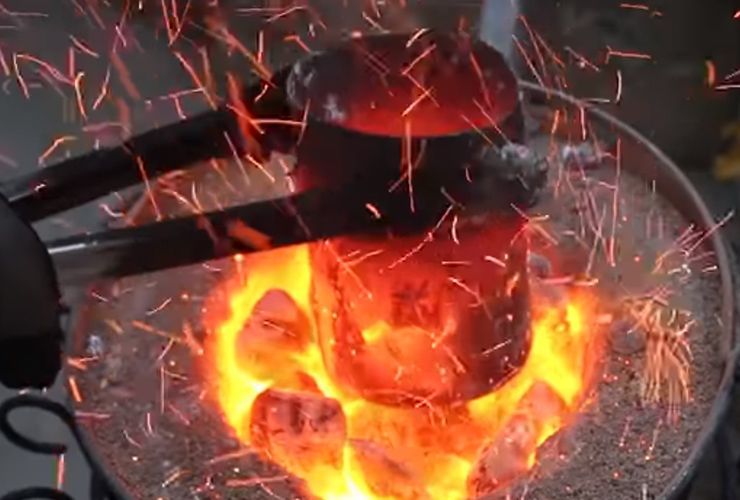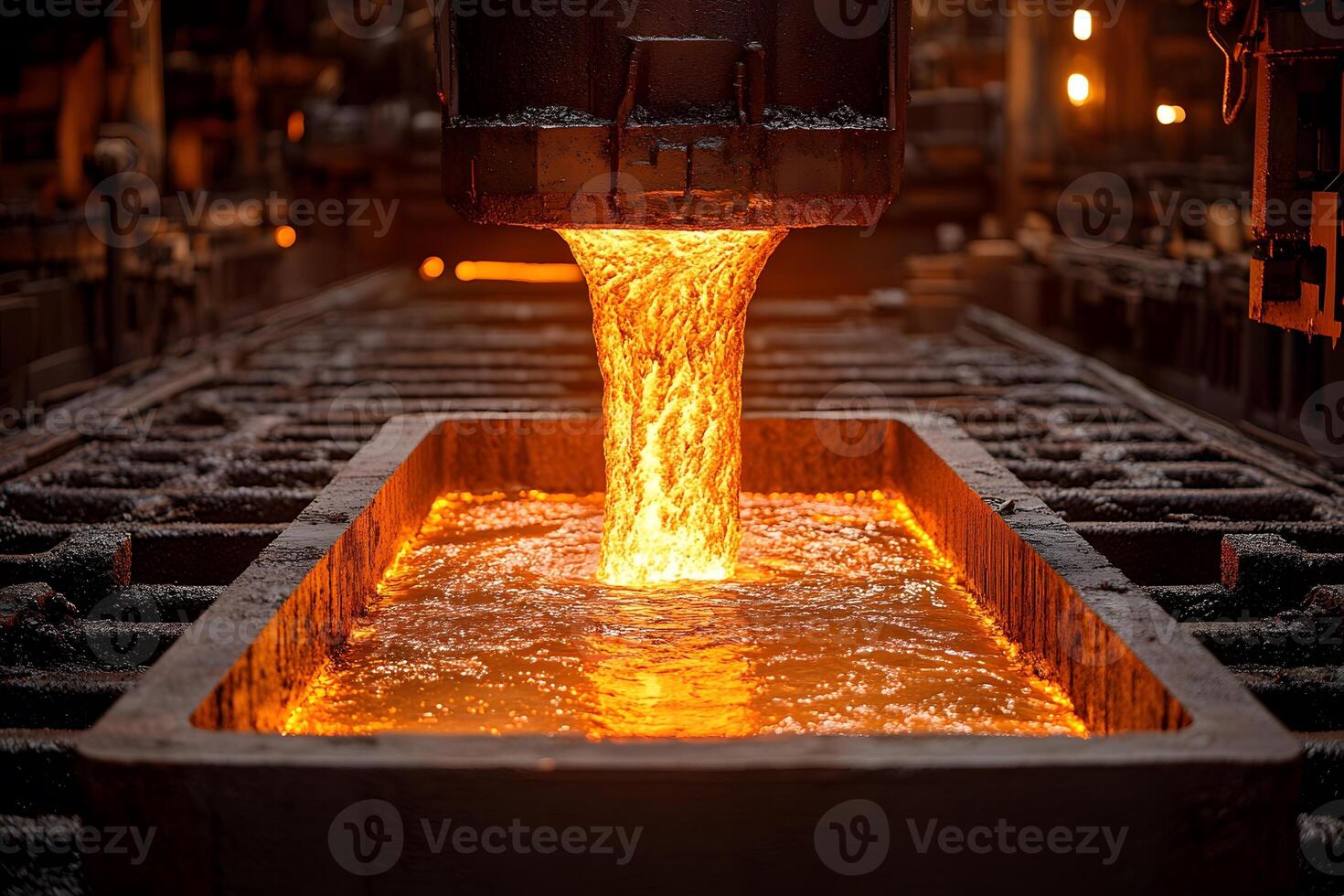Top Technological Advances Transforming the Metal Foundry Sector
Wiki Article
Understanding Metal Casting Processes: Technologies and Trends in the Foundry Market
The foundry sector is experiencing substantial changes driven by technological improvements. Technologies such as 3D printing and expert system are reshaping metal casting processes, improving efficiency and precision. Sustainable methods are acquiring grip, stressing the importance of ecological responsibility. Additionally, the intro of innovative products and automation is boosting total casting high quality. These developments recommend a crucial shift in the market, questioning regarding future directions and ramifications for manufacturers.Developments in 3D Printing for Metal Casting
Current innovations in 3D printing modern technology have actually substantially changed the landscape of steel casting. The combination of additive production techniques has enabled the quick manufacturing of complicated patterns and molds that were previously difficult or impossible to achieve with conventional approaches. By utilizing products such as sand and metal powders, manufacturers can produce intricate geometries that boost style flexibility and lower product waste. This advancement not only expedites the prototyping procedure yet also permits the customization of components customized to specific applications.
3D printing helps with shorter lead times, which is crucial in industries needing quick turn-around for parts. The modern technology also sustains the manufacturing of lightweight frameworks, therefore improving power efficiency in final product. Because of this, the foundry industry is experiencing a change towards even more lasting practices, driven by the effectiveness and precision used by these modern 3D printing methods in steel casting procedures.
The Duty of Expert System in Precision Production
As industries increasingly take on advanced manufacturing modern technologies, expert system (AI) is playing a crucial role in boosting precision production procedures. AI algorithms evaluate huge datasets to determine patterns and enhance production criteria, causing boosted accuracy and effectiveness. In metal casting, AI aids in predictive upkeep, decreasing downtime by forecasting devices failings prior to they take place.AI-driven simulations make it possible for producers to design the casting process, refining styles and reducing problems. Artificial intelligence methods boost top quality control by discovering anomalies in real-time, thus ensuring that just items satisfying rigorous requirements continue with the assembly line.

Lasting Practices in the Foundry Industry
Sustainability has become an essential focus in the foundry market, prompting suppliers to adopt practices that lessen ecological influence while maintaining productivity - Aluminum Foundry. One prominent method includes the recycling of products, specifically steels, which significantly minimizes waste and power intake. Foundries are increasingly executing closed-loop systems, permitting the reuse of sand and other casting products, thereby reducing the need for virgin resourcesOn top of that, energy-efficient why not try this out technologies, such as electric furnaces, are gaining traction, as they reduced greenhouse gas exhausts compared to conventional methods. Lots of factories are exploring the usage of eco-friendly binders and environment-friendly finishes to reduce poisonous results. Worker training on sustainable techniques has actually likewise become essential, cultivating a culture of ecological obligation within organizations. On the whole, these lasting methods not just contribute to ecological conservation however additionally improve the long-term stability of the foundry industry in a significantly eco-conscious market.
Developments in Products for Enhanced Casting Top Quality
With the continuous advancement of the foundry market, innovations in products have actually ended up being necessary for boosting casting quality. Advanced alloys and composite materials are significantly being used to boost mechanical properties and decrease flaws in spreadings. These materials typically use superior strength-to-weight proportions and boosted resistance to corrosion and wear, dealing with the needs of contemporary applications.In addition, the consolidation of nanomaterials is obtaining traction, enabling for finer microstructures that lead to enhanced surface area coatings and dimensional accuracy. Aluminum Foundry. 3D printing modern technologies also play a duty in creating complicated geometries with minimal waste, enabling making use of specialized materials that were previously challenging to cast
Furthermore, the development of eco-friendly binders and additives adds to lasting methods while preserving high-quality outcomes. Collectively, these technologies not only improve the performance of cast products however additionally line up with the sector's shift in the direction of sustainability and performance.
Automation and Robotics in Metal Casting Processes
Automation and robotics are reinventing steel casting procedures by improving procedures and improving precision. In modern factories, robotic systems are employed for jobs such as mold and mildew handling, pouring, and ending up, significantly decreasing human treatment. This not only decreases the risk of accidents yet additionally ensures constant high quality in production.Automation modern technologies, such as computer system here numerical control (CNC) equipments, assist in elaborate layouts and complicated geometries that were previously testing to achieve. Real-time data analytics make it possible for makers to keep track of procedures and enhance performance continuously.
The combination of automation brings about raised efficiency and efficiency, permitting factories to meet growing market demands while reducing preparations. As the industry accepts these improvements, the labor force is sites also developing, needing brand-new abilities to operate and preserve advanced equipment. Overall, the adoption of automation and robotics is an essential trend forming the future of steel casting procedures.
Frequently Asked Concerns
What Is the Background of Metal Casting Techniques?
Metal casting techniques day back to ancient people, with evidence of bronze casting in Mesopotamia around 3000 BCE. Over centuries, techniques progressed significantly, including developments in products and technology, shaping modern industrial methods.Just How Does Metal Casting Impact the Setting?
Metal casting substantially influences the setting via power intake, emissions, and waste generation. Developments in sustainable techniques and modern technologies aim to reduce these effects, advertising more environmentally pleasant approaches within the industry.What Precaution Are Essential in Foundries?

What Prevail Defects in Metal Casting Products?
Usual problems in steel casting products include porosity, contraction, misruns, chilly shuts, and surface area flaws. These issues arise from aspects such as incorrect temperature level control, insufficient mold layout, and contamination during the casting process.How Do Foundries Guarantee High Quality Control in Casting Processes?
Factories execute extensive quality assurance steps with regular evaluations, standardized testing, procedure surveillance, and adherence to sector criteria. These methods assist determine problems early, guaranteeing the stability and reliability of the final casting items.Developments such as 3D printing and fabricated knowledge are improving steel casting processes, enhancing efficiency and precision. Current advancements in 3D printing technology have substantially transformed the landscape of metal casting. Automation and robotics are transforming metal casting processes by streamlining procedures and improving precision. Metal casting methods date back to ancient human beings, with evidence of bronze casting in Mesopotamia around 3000 BCE. Usual flaws in metal casting products consist of porosity, contraction, misruns, cool shuts, and surface blemishes.
Report this wiki page